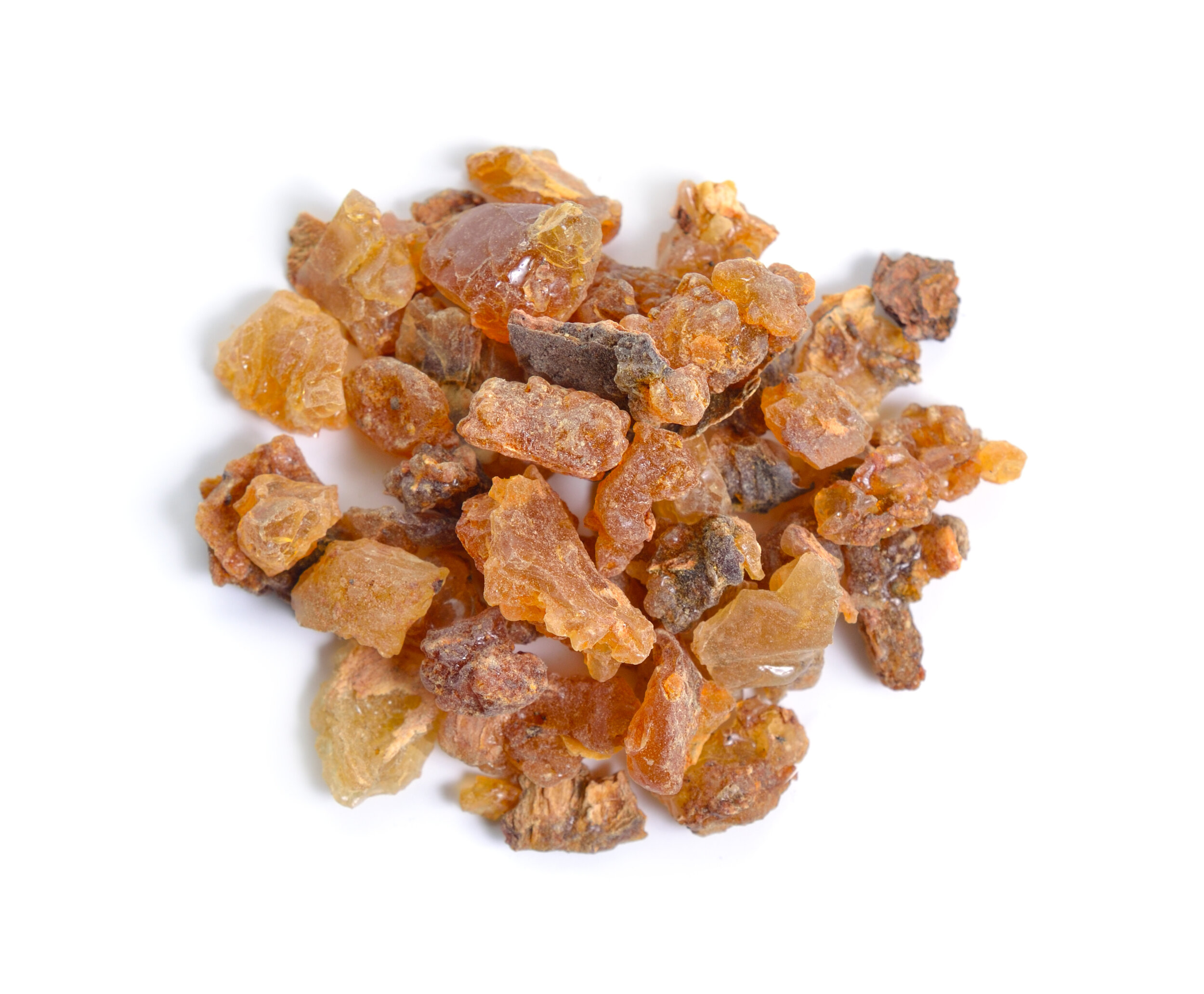Name and origin
Commiphora myrrha (Myrrh) or in old texts it is referred to as Balsamodendron myrrha (See Kohler’s Medicinal Plants (1890)).
Balsamodendron Myrrha- Myrrh from Kohler’s Medicinal Plants (1890)
Family
Burseraceae
Part used for essential oil
Gum resin from the Commiphora myrrha tree by distillation.
History
Myrrh has been used and valued since ancient times. Its long history of use goes back to 4000 years go. It was regularly used in Egypt and India for rituals, as incense, in cosmetics and even for oral health applications such toothpaste and mouth rinse.
In Christianity, gold, frankincense and myrrh were the gifts given to the baby Jesus by the three wise men.
Nowadays, it is widely used for spiritual applications, food and drink industry and in cosmetics and perfumery for its grounding, meditative scent.
Safety information
Tisserand and Young indicated that myrrh essential oil may be fetotoxic, and recommended to avoid its use during pregnancy and lactation.
Myrrh resin
Use of essential oil
Emotional: stress, nervous tension, anxiety, insomnia, depression, debility
Skin: grazes, cuts, chapped/cracked and dry skin, mature skin, fungal infections, ulcers, acne
Respiratory: laryngitis, sinusitis, colds, influenza, coughs, catarrh
Digestive: gingivitis, mouth ulcers
Muscular/Skeletal: arthritis, rheumatism, aches and pains
Genito-urinary: dysmenorrhea, amenorrhea, birthing tears
Therapeutic properties
anaesthetic
antibacterial
anticatarrhal
antidepressant
antifungal
anti-infectious
anti-inflammatory
antimicrobial
antiseptic
cicatrisant
emmenagogue
expectorant
sedative
tonic
uterine
vulnerary

